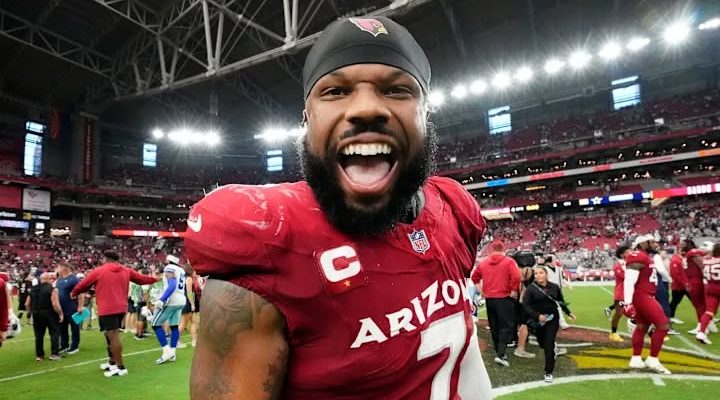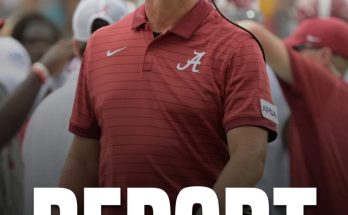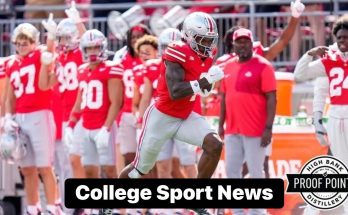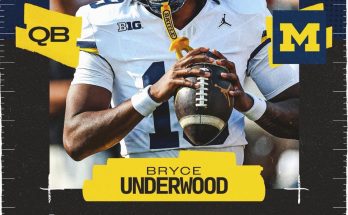With training camp fast approaching, the Arizona Cardinals find themselves in a pivotal moment. As the team enters the 2025 NFL season under the continued leadership of head coach Jonathan Gannon and general manager Monti Ossenfort, there’s a clear sense that the franchise is still in the process of rebuilding but is inching closer toward a competitive turnaround. Last season showed signs of promise, particularly with the return of quarterback Kyler Murray and the emergence of young talent, but the Cardinals remain far from a complete team.
The coming weeks could provide a valuable opportunity for Arizona to make several strategic last-minute moves to shore up weaknesses, add veteran leadership, and position themselves for a more competitive season. These kinds of pre-camp transactions are not unusual, especially for a franchise that still has holes to address and cap space to work with. Below, we explore three potential last-minute moves the Cardinals might pursue before training camp that could significantly shape their outlook for the season.
One potential move the Arizona Cardinals could explore before camp opens is the addition of a veteran cornerback. While the team has invested draft capital into the secondary, including second-year cornerback Garrett Williams and 2024 third-round pick Max Melton, the overall group lacks proven experience and consistency. As it stands, the Cardinals will be leaning heavily on young, relatively untested players to face off against elite NFC receivers such as Cooper Kupp, Deebo Samuel, and CeeDee Lamb. In a pass-heavy league, that’s a risky proposition.
The free agent market still features several cornerbacks with starting experience who could provide an immediate upgrade and veteran presence. Players like Stephon Gilmore, Casey Hayward, or even a reunion with Patrick Peterson—if he’s open to a short-term, mentor-like role—could help stabilize the back end of Arizona’s defense. Gilmore, in particular, is intriguing. At 33, he’s not the elite defender he once was, but he played at a serviceable level with the Dallas Cowboys last season and would bring invaluable leadership to a young defense. Hayward, meanwhile, has the versatility to play inside or outside and could be a strong scheme fit in Gannon’s system.
Signing a veteran cornerback doesn’t just address depth—it offers a safety net in case one of the young prospects falters or gets injured. A seasoned player could also accelerate the development of rookies and second-year players by offering mentorship on technique, film study, and preparation. The Cardinals are projected to have upwards of \$20 million in available cap space heading into camp, so financially, this move is feasible. Investing a portion of that into a short-term deal for a veteran corner makes football sense and could be the difference between a competitive secondary and a vulnerable one.
Another potential move Arizona might pursue is trading for or signing a veteran interior offensive lineman. While the team did address the offensive line this offseason, including selecting guard Isaiah Adams in the 2024 NFL Draft and bringing in some depth players, the interior offensive line remains a potential weak point. The projected starters include Hjalte Froholdt at center, with Elijah Wilkinson and Will Hernandez at guard. While Hernandez has been solid, Froholdt and Wilkinson are more stopgap solutions than long-term answers.
If Kyler Murray is to return to peak form, keeping him upright and giving him a clean pocket to work from is essential. A veteran interior lineman, especially one with experience at both guard and center, could be an important insurance policy. Dalton Risner remains a free agent and is a logical fit. At just 30 years old, Risner is still in his prime and brings starting experience from his time with the Denver Broncos and Minnesota Vikings. His nasty playing style and consistency in both run and pass protection could provide a noticeable upgrade at left guard or even center if needed.
Alternatively, the Cardinals could explore the trade market. Several teams may be looking to offload veteran linemen ahead of training camp, particularly if a younger player is poised to win a starting job. The Cardinals could package a late-round pick or a developmental player to acquire someone who can immediately contribute. Interior linemen often go overlooked in free agency and trades, but for a team that allowed 45 sacks last year and ranked near the bottom in run-blocking metrics, shoring up the middle of the offensive line is crucial. This would not only help Murray but also support a ground game expected to feature James Conner and dynamic rookie Trey Benson.
Lastly, the Cardinals could make a last-minute splash by adding a veteran edge rusher to bolster a pass rush that ranked in the bottom third of the league in sacks and pressure rate last season. Arizona has some intriguing young talent on the edge, including BJ Ojulari, who showed flashes during his rookie campaign, and rookie Darius Robinson, the team’s 2024 first-round pick. But banking entirely on youth at one of the NFL’s most impactful positions is a high-risk approach, particularly when pressure on opposing quarterbacks can make or break a defense.
Several edge defenders are still available in free agency, and some could fit well into Gannon’s 3-4 hybrid system. One name to watch is Yannick Ngakoue. While Ngakoue is not a great run defender, he has a proven track record as a pass rusher, having recorded at least eight sacks in seven of his eight NFL seasons. His burst off the edge and ability to win in one-on-one situations could be an ideal complement to a rotation featuring Ojulari and Robinson. Justin Houston is another veteran option, though his age (36) may make him more of a situational player.
Arizona could also look to make a strategic trade for a rotational pass rusher. Teams with excess depth at defensive end or outside linebacker may be willing to part with a player in exchange for a draft pick or young prospect. This approach would allow the Cardinals to maintain flexibility while potentially adding a player with upside and scheme versatility.
Adding a veteran edge rusher isn’t just about increasing sack numbers—it’s about influencing opposing game plans. Quarterbacks with time in the pocket will pick apart even the best secondaries. If the Cardinals can’t generate consistent pressure, their young corners and safeties will be left vulnerable. Gannon, known for his defensive expertise, understands this well. A move to fortify the edge would align with his coaching philosophy and give the defense a better shot at being disruptive, particularly in key moments late in games.
These three moves—adding a veteran cornerback, reinforcing the interior offensive line, and bringing in a proven edge rusher—are not just reactionary tactics. They are strategic decisions that could have ripple effects across the roster. Each potential signing or trade addresses a clear area of concern, provides depth and stability, and supports the development of younger players by surrounding them with experienced professionals. With a relatively young roster and a franchise quarterback looking to reestablish his place among the NFL elite, the Cardinals must do everything they can to position themselves for success.
The NFC West remains a tough division, with the 49ers still among the league’s elite and the Seahawks and Rams both capable of playoff contention. If the Cardinals hope to take meaningful strides this season, they can’t afford to rely solely on growth from within. Strategic last-minute moves like these could be the difference between another rebuilding year and one that sparks real momentum for the future.
Arizona has the resources to act. With cap flexibility, multiple draft assets in 2026, and a front office that’s already shown a willingness to make bold moves, the window is open. The key will be identifying the right opportunities and acting decisively. Waiting until the regular season begins may be too late to integrate new additions effectively. With training camp serving as a launching pad for the season, any player added now will have a chance to learn the system, bond with teammates, and contribute from Week 1.
In the NFL, small roster moves often go unnoticed in the moment but end up having outsized impacts. A mid-July signing could become a key contributor by December. For the Cardinals, this is the moment to find those diamonds in the rough, shore up weak spots, and send a clear message that 2025 isn’t just another step in the rebuild—but the start of something real.



